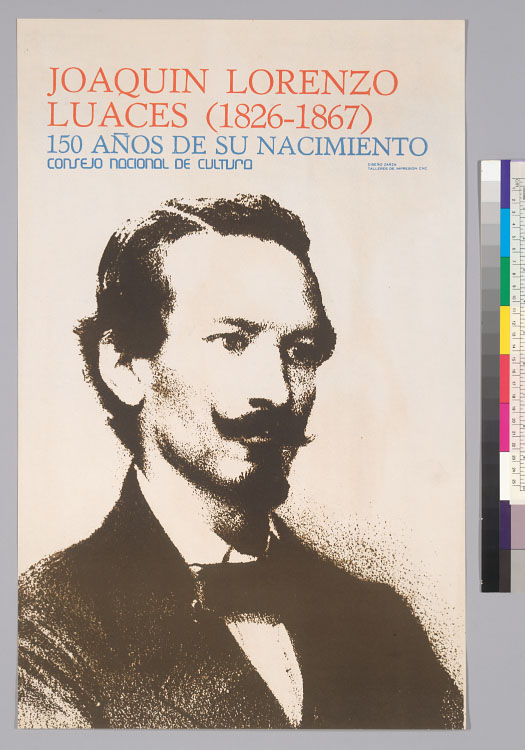2.1.10 The poetry of Joaquín Lorenzo Luaces (1826 – 1867)

The poetic work of Joaquín Lorenzo Luaces has been considered detached from its contemporary context, not only because of its thematic interests, which included the need for Cuban independence, both in direct verbal expressions and through the construction of allusive universes, but also because of the transfer and analysis of similar problems in other latitudes, situations in which he always ended by advocating for freedom. Many of his poems were censored by the metropolis because of this aspiration, more explicit or interpreted implicitly, but present at the root of his verses.
However, in terms of style, he did not conform to current literary norms and constructed a lyrical discourse that, in the opinion of some, was unprecedented and without epigones. His eclecticism included neoclassical traits, aspects of the first and second Romantic generations, and elements of the modernist aesthetic that was already taking shape in Cuban poetry. “A reading of his poetry reveals a defined, harmonious voice, over which the winds of fashion flow without cracking it or definitively overtaking it: they are playful or bookish additions to an always identifiable poetic system, echoes of the era to which the poet could not—would not—remain indifferent, convinced of the social mission that corresponded to him as a writer.”
José Lezama Lima includes him among his favorites in some notes compiled in 2010; however, he disagrees with the author’s claim that he truly had a voice of his own within the poetic and cultural context of his time: “Luaces remains as a prototype of an indecisive poetry, which tests its strength in the most varied forms of expression, but without achieving a complete and complete form.”
Among the poems selected by Lezama are “On the Death of the Bacchante” and “Cuba. Mythological Poem.” The former has a remarkable erotic charge for its time:
“Erigone’s mane in disorder,
of Venus prey, with wild ardor,
barely hidden in the Greek suit
the ivory and lily balloons.
The dry lip that modesty does not restrain
the stormy waves bite the canvas,
and tearing the uncomfortable clothing
kisses and squeezes the toasted sand.
Drunk with love, frantic with wine,
around he extends his feverish gaze,
badly laid out on the stones of the road.
And when she contemplates herself alone, disheartened
he presses his chest, he sighs with a murmur,
close your eyes, and enjoyably expire”
Luaces conceived poetry as a volitional act through which lyrical filigrees were created, a conscious aesthetic desire of the author, and this attitude was undoubtedly related to the Parnassian movement that would develop years later, and would mark all his literary production, especially that in which he adhered to the most classical and polished forms.
From an ideological perspective, the separatist creed is intelligible in numerous pieces, not only through metaphors with anti-Spanish content, but also through the historical figures to which he paid tribute and the nativism itself, which claims an identity opposed to imported Hispanic culture. However, he stubbornly maintained a racist stance that surpassed even that of his fellow countrymen at the time. He was an advocate of work as the engine of progress, which has led some commentators to link him to Socialism, although this is a very unfounded conjecture.
However, it is undeniable that he was one of the first poets to embrace art from a position of commitment to society and contributed to the formation of nationality through his literary reflection.








